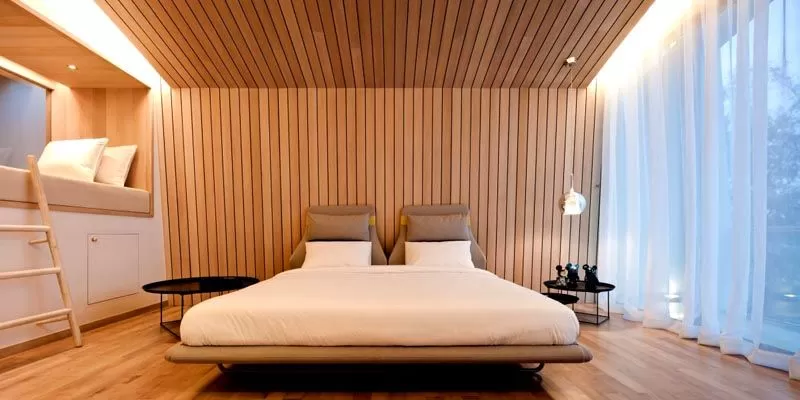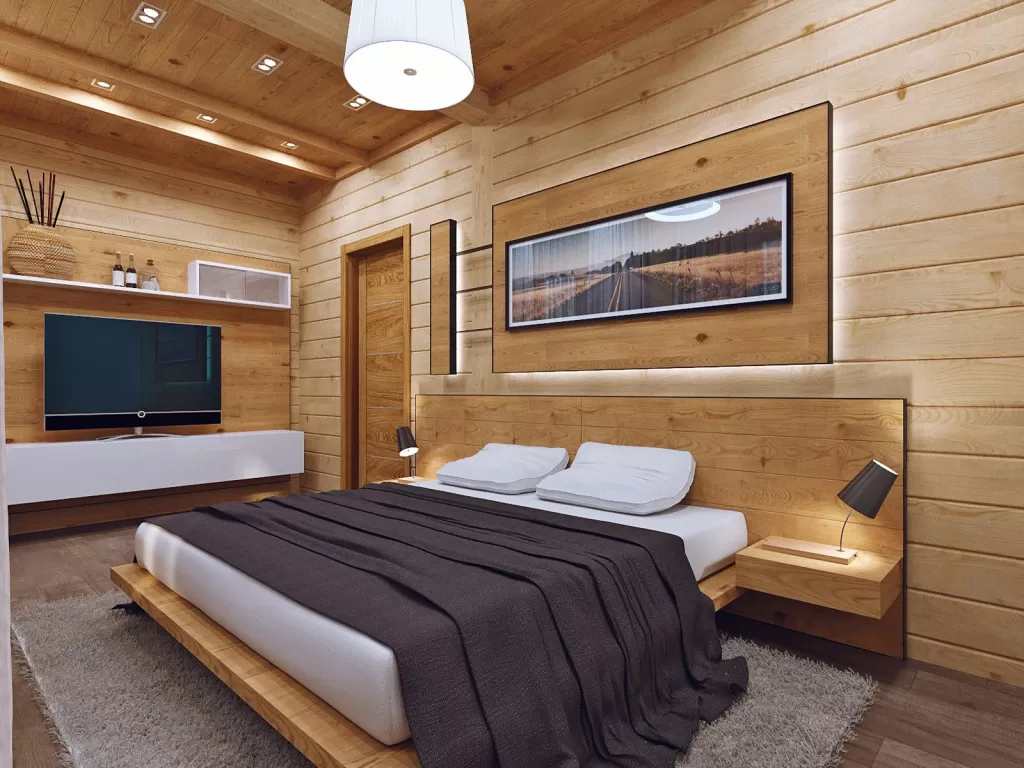Finishing with natural wood has not lost its relevance for many years, although materials that imitate real wood are trying to compete with it. Among a variety of lumber, imitation timber and lining are considered one of the most versatile, but many are confused about the intricacies of each product. Our experts will tell you how to choose the best one.
Features of finishing materials
Both of these products are highly regarded for their versatility and excellent appearance, which allows you to achieve the maximum resemblance to real timber.
clapboard

It is a carefully processed and fitted board made of hardwood / softwood. Clapboard is a real treasure when it comes to interior design. It is often used in various interior styles:
-
Scandinavian — goes well with stone;
-
Hi-tech — in the interior is used in combination with metal;
-
Loft — various types of decor are used;
-
Provence — lining is covered with a layer of paint, etc.
The lining made of wood has a number of important properties:
-
Versatility of application;
-
-
Environmental friendliness;
-
Easy installation;
-
Affordable price.
Lining made of wood has a unique ability to form a healthy microclimate in the room. In the cold season, a room decorated with this material will be warm, and air humidity will be within normal limits.
Among the weaknesses of the lining — combustibility and susceptibility to decay. To avoid this, the material is coated with special impregnations.
timber imitation

Belongs to the category of planed with a fairly wide size range: the length of the product can be 6 m, and the width ranges from 0.65 to 2 m. configuration. Imitation of timber is sometimes called a kind of symbiosis of lining and block house.
Advantages of a bar
-
Environmental friendliness — for the manufacture of imitation timber, various materials of natural origin are used (in particular, wood). And modern methods of decorative processing allow you to create a safe and aesthetic outer coating. -
Application versatility — panels made of imitation timber can be used to finish surfaces of any material. -
wear resistance — the product in question perfectly copes with temperature changes, and, in the presence of antiseptic treatment, with humidity (such a product is not afraid of fungus, mold and moisture). The service life of timber imitation can be up to 25 years. -
Excellent sound and heat insulation – structural features allow the product to provide sufficient protection of the premises from heat loss. -
Ease of installation — for finishing surfaces (both horizontal and vertical) with the help of imitation of a bar, no special skills or tools are required. The connection of structural elements with each other is carried out by the “thorn-groove” method. -
Affordable price — low price and ubiquity make timber imitation an affordable material for every consumer. -
-
To make the product not seem perfect, it is worth mentioning its weaknesses: desiccation and flammability.
Main differences
Imitation of timber and lining have practically no differences, so non-professionals often confuse these two finishing materials. You need to understand the difference in order to choose the right product. First, the thickness of the products. Imitation of timber is thicker than lining: in the range from 16 to 37 mm. The thickness of the lining does not exceed 16 mm.
Secondly, the method of installation. The lining can be installed in almost any direction: horizontally, vertically, diagonally. Imitation of a bar cannot boast of such versatility — this material is only suitable for horizontal laying.
What to choose for exterior / interior decoration
In principle, both materials are suitable for facade cladding. It all depends mainly on the budget allocated for construction / repair, and taste preferences. We recommend using imitation timber for outdoor work (when it comes to frame and wooden buildings), since it is less susceptible to external influences.
When choosing a suitable product, always pay attention to its humidity — the optimal indicator is 10–14%. If it is higher, there is a high probability of deformation of the finish after prolonged exposure to the sun. It will not be superfluous to take into account the type of product — it is better to focus on class A products. Such products do not have defects, they have a strong locking connection.
For interior decoration of buildings, lining is the best option (although it can also be used for exterior decoration). By the way, lining is also used for cladding bath walls, since the material is made from hardwood, which does not emit essential oils that are poisonous to humans when heated.

Добавить комментарий
Для отправки комментария вам необходимо авторизоваться.